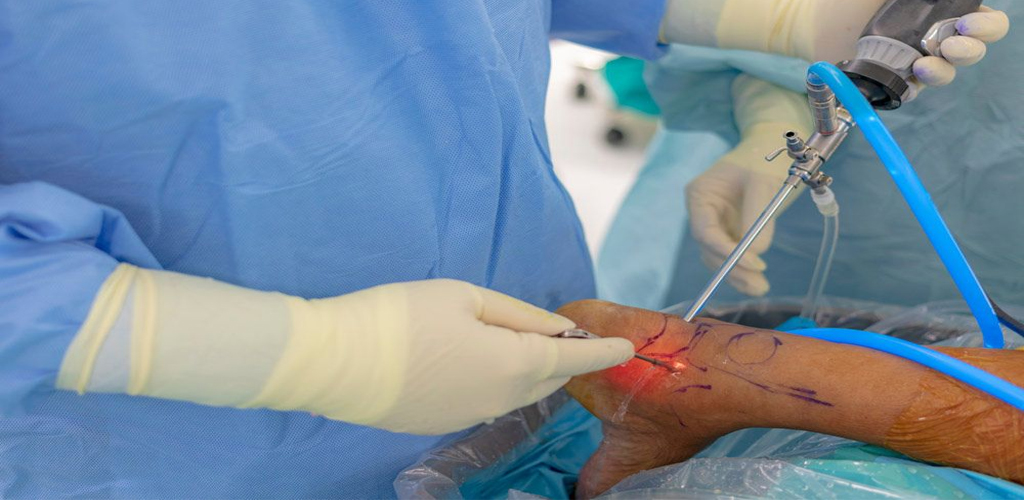Joint Debridement: Removal of damaged tissue or loose bodies within the ankle joint.
.png)

Ankle arthroscopy is a minimally invasive surgical procedure used to diagnose and treat various conditions affecting the ankle joint. This procedure involves the use of a small camera, called an arthroscope, which is inserted into the ankle through tiny incisions. Ankle arthroscopy allows for a detailed examination of the joint, and it can be therapeutic, as certain conditions can be addressed during the same procedure.
Ankle arthroscopy may be recommended for the following conditions:
Joint Debridement: Removal of damaged tissue or loose bodies within the ankle joint.
Treatment of Ankle Impingement: Addressing bony or soft tissue impingement causing pain and restricted movement.
Repair of Ligament Tears: Surgical correction of torn ankle ligaments.
Treatment of Cartilage Injuries: Addressing cartilage damage or defects within the ankle joint.
The ankle arthroscopy procedure typically involves the following steps:
Anesthesia: The patient is given either general anesthesia or regional anesthesia to ensure comfort during the procedure.
Incisions: Small incisions are made around the ankle to allow the insertion of the arthroscope and specialized instruments.
Arthroscopic Examination: The surgeon visualizes the inside of the ankle joint using the arthroscope, assessing for any abnormalities.
Treatment: Depending on the findings, the surgeon may perform various procedures, such as debridement, ligament repair, or cartilage treatment.
Closure: The incisions are closed, and a bandage or dressing is applied to the ankle.
Recovery from ankle arthroscopy varies depending on the specific procedures performed. Patients are typically advised to follow a structured rehabilitation program, including physical therapy, to regain strength, flexibility, and function in the ankle.
If you are experiencing ankle pain or have a known ankle condition, consult with an orthopedic specialist to determine if ankle arthroscopy is an appropriate option for diagnosis and treatment. Early intervention can contribute to better outcomes and an improved quality of life.